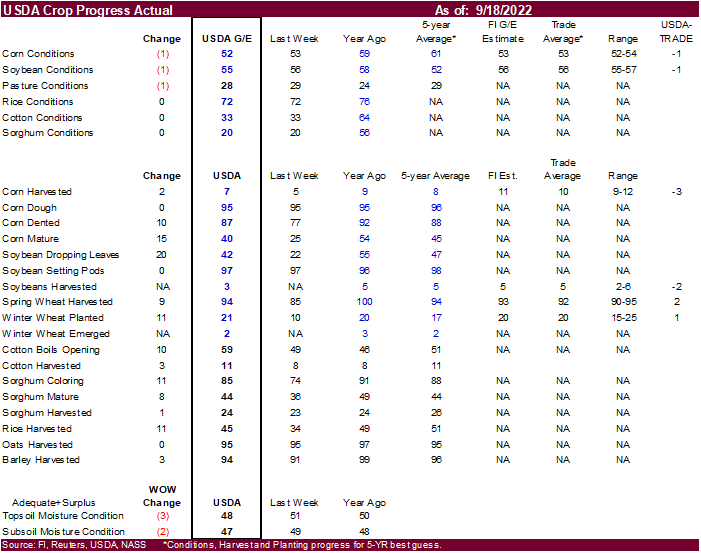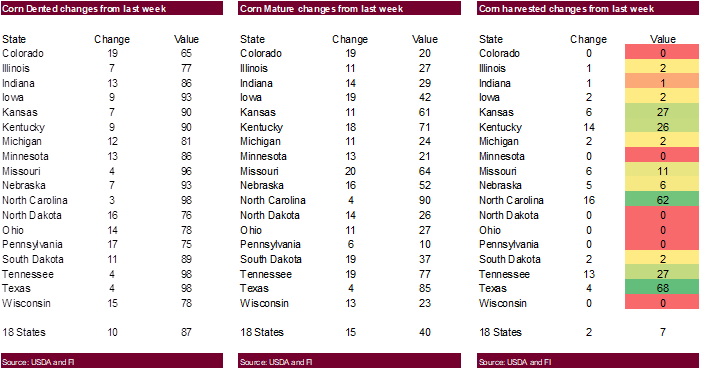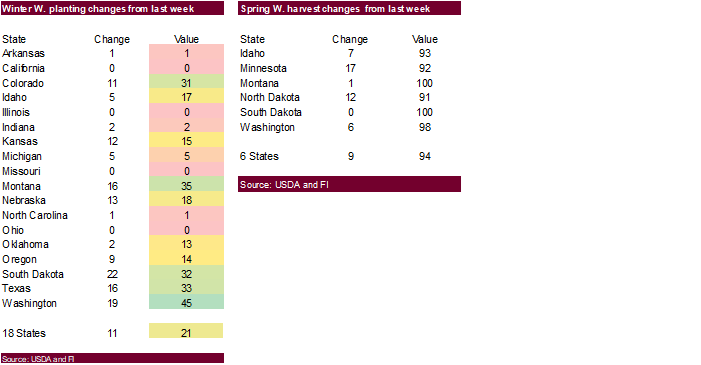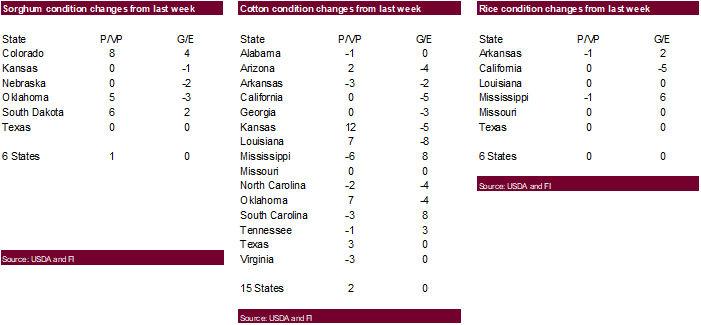PDF Attached
Private
exporters reported sales of 136,000 metric tons of soybeans for delivery to China during the 2022/2023 marketing year.
USDA
US crop conditions
US
CORN – 52 PCT CONDITION GOOD/EXCELLENT VS 53 PCT WK AGO (59 PCT YR AGO) -USDA
US
CORN – 7 PCT HARVESTED VS 5 PCT WK AGO (8 PCT 5-YR AVG) -USDA
US
CORN – 87 PCT DENTED VS 77 PCT WK AGO (88 PCT 5-YR AVG) -USDA
US
CORN – 40 PCT MATURE VS 25 PCT WK AGO (45 PCT 5-YR AVG) -USDA
US
SOYBEAN – 55 PCT CONDITION GOOD/EXCELLENT VS 56 PCT WK AGO (58 PCT YR AGO)
US
SOYBEANS – 3 PCT HARVESTED (5 PCT YR) (5 PCT 5-YR AVG) -USDA
US
SOYBEANS – 42 PCT DROPPING LEAVES VS 22 PCT WK AGO (47 PCT 5-YR AVG) -USDA
US
WINTER WHEAT – 21 PCT PLANTED VS 10 PCT WK AGO (17 PCT 5-YR AVG) -USDA
US
WINTER WHEAT – 2 PCT EMERGED (3 PCT YR) (2 PCT 5-YR AVG) -USDA
US
SPRING WHEAT – 94 PCT HARVESTED VS 85 PCT WK AGO (94 PCT 5-YR AVG) -USDA
US
COTTON – 11 PCT HARVESTED VS 8 PCT WK AGO (11 PCT 5-YR AVG) -USDA
US
COTTON – 33 PCT CONDITION GOOD/EXCELLENT VS 33 PCT WK AGO (64 PCT YR AGO)
US
COTTON – 59 PCT BOLLS OPENING VS 49 PCT WK AGO (51 PCT 5-YR AVG) -USDA
US
RICE – 72 PCT CONDITION GOOD/EXCELLENT VS 72 PCT WK AGO (76 PCT YR AGO) -USDA
US
RICE – 45 PCT HARVESTED VS 34 PCT WK AGO (51 PCT 5-YR AVG) -USDA
Soybeans,
meal and corn ended higher. Soybean oil and wheat traded lower. US harvesting is expected to ramp up this week bias Delta and lower Midwest with a weather outlook calling for mostly dry conditions. Hot and dry conditions are seen for the southwestern hard
red winter wheat growing areas over the next two weeks. Brazil will see widespread rains this week, favoring early development for recently planted corn and lessor extent soybeans. Argentina is still battling a drought and we could see the local exchanges
start to lower their estimates for soybeans and corn planting areas.





